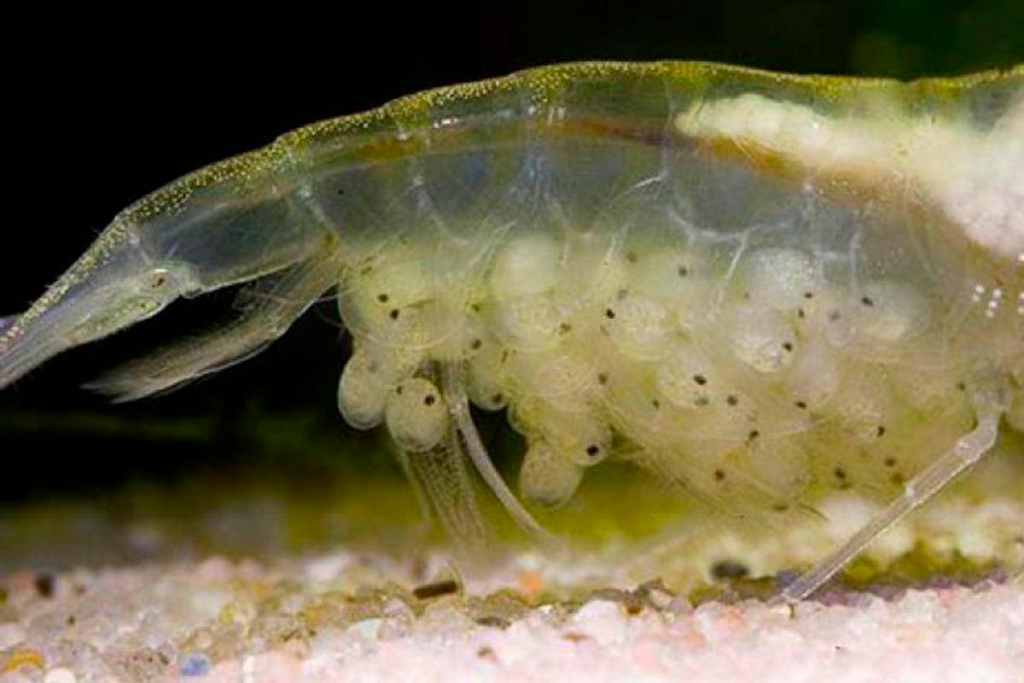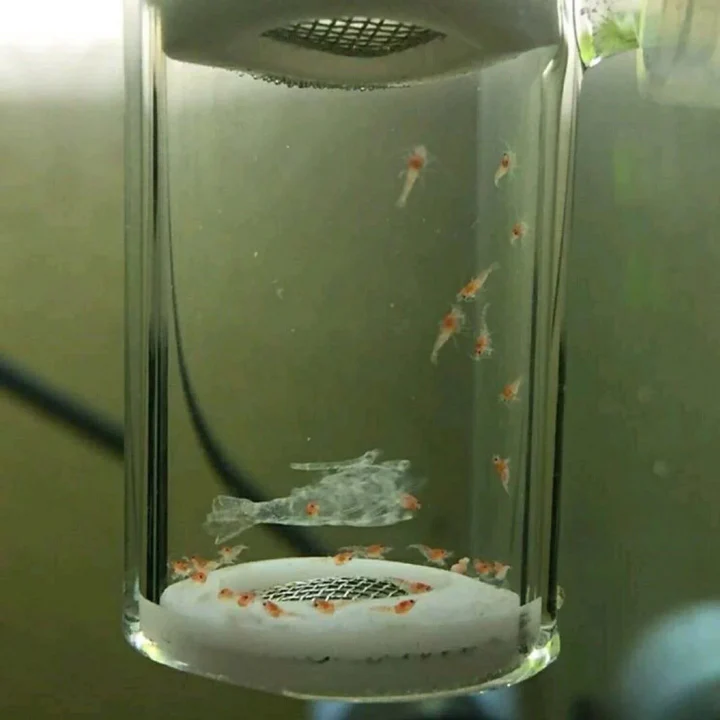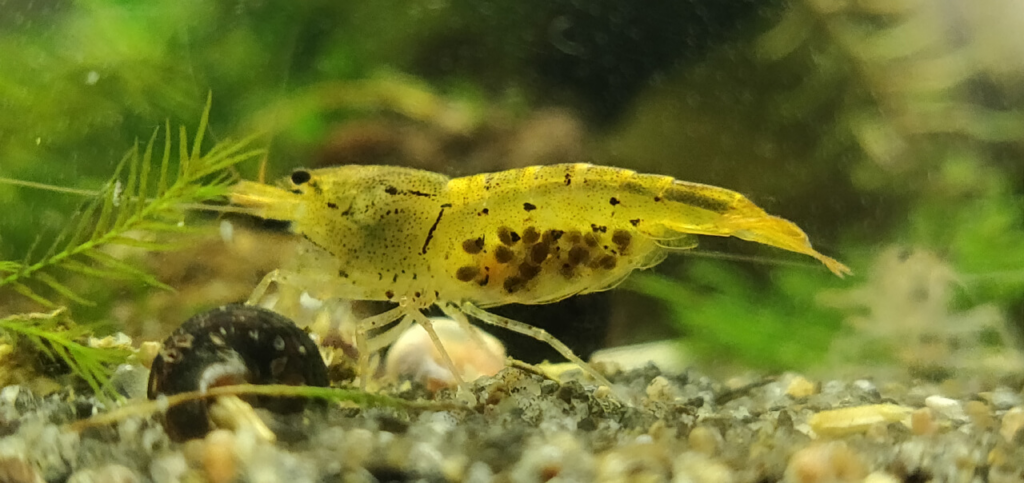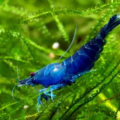Discover how to save shrimp eggs after the mother shrimp’s passing with our comprehensive guide. Learn essential tips for successful shrimplet (baby shrimp) hatching and care!

If you are someone in a dire situation requiring the salvaging of shrimp eggs from its deceased mother or if you are someone that likes to plan ahead, you will benefit from this informative guide!
Imagine having a mother shrimp who is carrying eggs and then she tragically moves on with her life leaving her delicate eggs. The story does not have to end there. With a little finesse and some shrimp-savvy tips.
You can be an honorary hero to these vulnerable eggs, giving them the best shrimp egg care. This guide will give you freshwater shrimp breeding tips, saving shrimp eggs, and hatching them successfully!
Assessing the Viability of Shrimp Eggs
You need to ask yourself which are viable shrimp eggs or if you are wasting your time. Identifying healthy shrimp is simple. Healthy shrimp eggs are naturally vibrant in color, have tiny eye spots, and subtle wiggles. On the flip-side, non-viable eggs are pale and cloudy. Using these basic egg assessment tips will be beneficial to find signs of healthy shrimp eggs.
Steps to Remove Shrimp Eggs Safely
Removing shrimp eggs from their carrier is not for the weak. Handling eggs safely requires precision and patience. You have to think of it as a high-stake game of the old Operation Boardgame requiring a steady hand, patience, and a clean toolkit.
The primary tool required are sanitized tweezers or a soft brush to gently dislodge the eggs without squishing them. Make sure your work space is in a clean and decluttered environment to avoid contamination during this delicate freshwater shrimp egg care process.
Setting Up an Incubator for Shrimp Eggs

Time to use the arts and crafts skills you learned in elementary school to create DIY shrimp egg care apparatus! Hatching eggs without a mother does not have to be impossible. You will need to create the womb in the form of an incubator. A shrimp egg incubator setup is like a cozy cabin for your fry.
- Incubator Requirements: Get a small container and add gentle aeration, keeping the water at 75 degrees fahrenheit.
- Water Conditions: Maintain the pH at 6.5-7.5 for an egg-cellent environment that prevents fungus from growing and promotes shrimp egg zen.
Ensuring Proper Aeration and Circulation for Shrimp Eggs
All living beings need nutrients to sustain healthy living. For shrimp eggs, they need oxygen, lots of it to grow into healthy larvae.
A low-flow air stone is your secret weapon which creates a gentle breeze of sorts while oxygenating freshwater without turning your incubator into a whirlpool.
Proper circulation mimics nature’s flow, giving your eggs the ultimate oxygenation they need to continue thriving; preventing fungal growth on eggs.
Monitoring Shrimp Eggs for Healthy Development
This is where attention to detail will be your greatest ally. Monitoring the shrimp eggs’ health is important to ensure they are maintaining healthy development. Look for signs of developing eggs such as darkening color or visible larvae inside the shells.
If you notice any issues like cloudiness or lack of progression, it might be an indicator that a problem is present and will need immediate attention to bring healthy freshwater shrimp eggs to term.
How to Handle Hatched Shrimp Larvae

If you have reached this successful step of caring for shrimp larvae, its time to celebrate your hard work and dedication! Once the shrimp larvae hatch, they will need careful handling and a safe nursery environment.
A nursery setup for shrimp fry will need gentle filtration and plenty of hiding spots to keep the tiny fry safe from harm’s way. Feeding newborn shrimp involves offering infusoria or powdered shrimp food, ensuring they receive enough nutrition during their developmental stages.
Common Challenges in Saving Shrimp Eggs
Saving shrimp eggs is an exhilarating feat if done correctly. However, do not give yourself a hard time if you cannot save any eggs since this effort presents lots of challenges to overcome.
For example, fungal infections, poor water quality, and failed hatch attempts are common when trying to hatch these eggs artificially. Here are some tips for troubleshooting shrimp egg care.
- Preventing Egg Fungus: You can use anti-fungal treatments safe for eggs and maintaining optimal water conditions.
- Maintaining Water Quality: Maintaining optimal water quality is necessary. Regular monitoring of water parameters is crucial in overcoming challenges in shrimp breeding.
Conclusion

If you are successful in hatching shrimp eggs after the mother has passed, consider yourself a highly advanced aquarist Achieving this accomplishment without the presence of the mother requires meticulous attention to detail in handling incubation and monitoring.
By following these steps for caring for shrimp eggs without a mother, you can improve your chances of successful shrimp egg hatching. Soon you will be able to enjoy the rewarding experience of being a shrimp parent and raising these eggs to adulthood.











2 thoughts on “Saving Shrimp Eggs: A Step-by-Step Guide When the Mother Shrimp Dies”